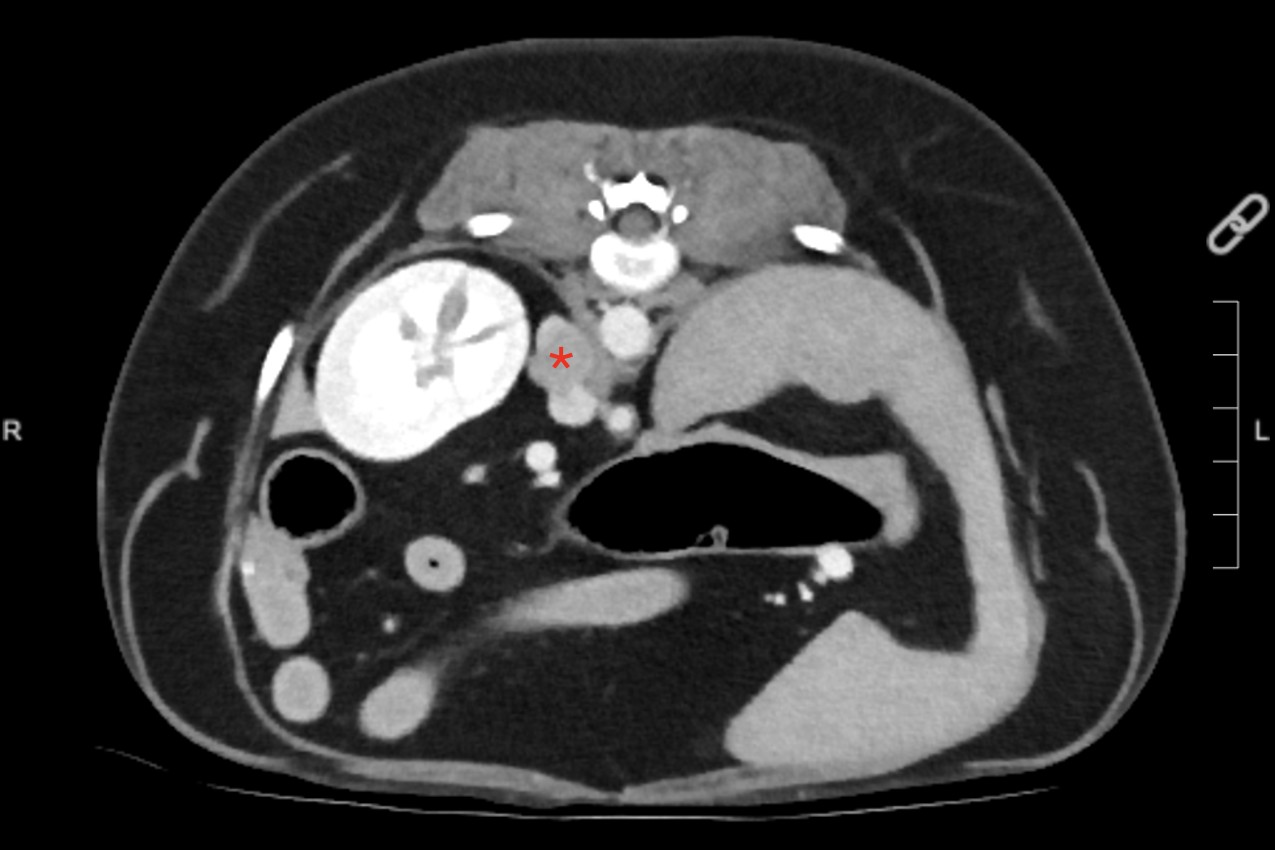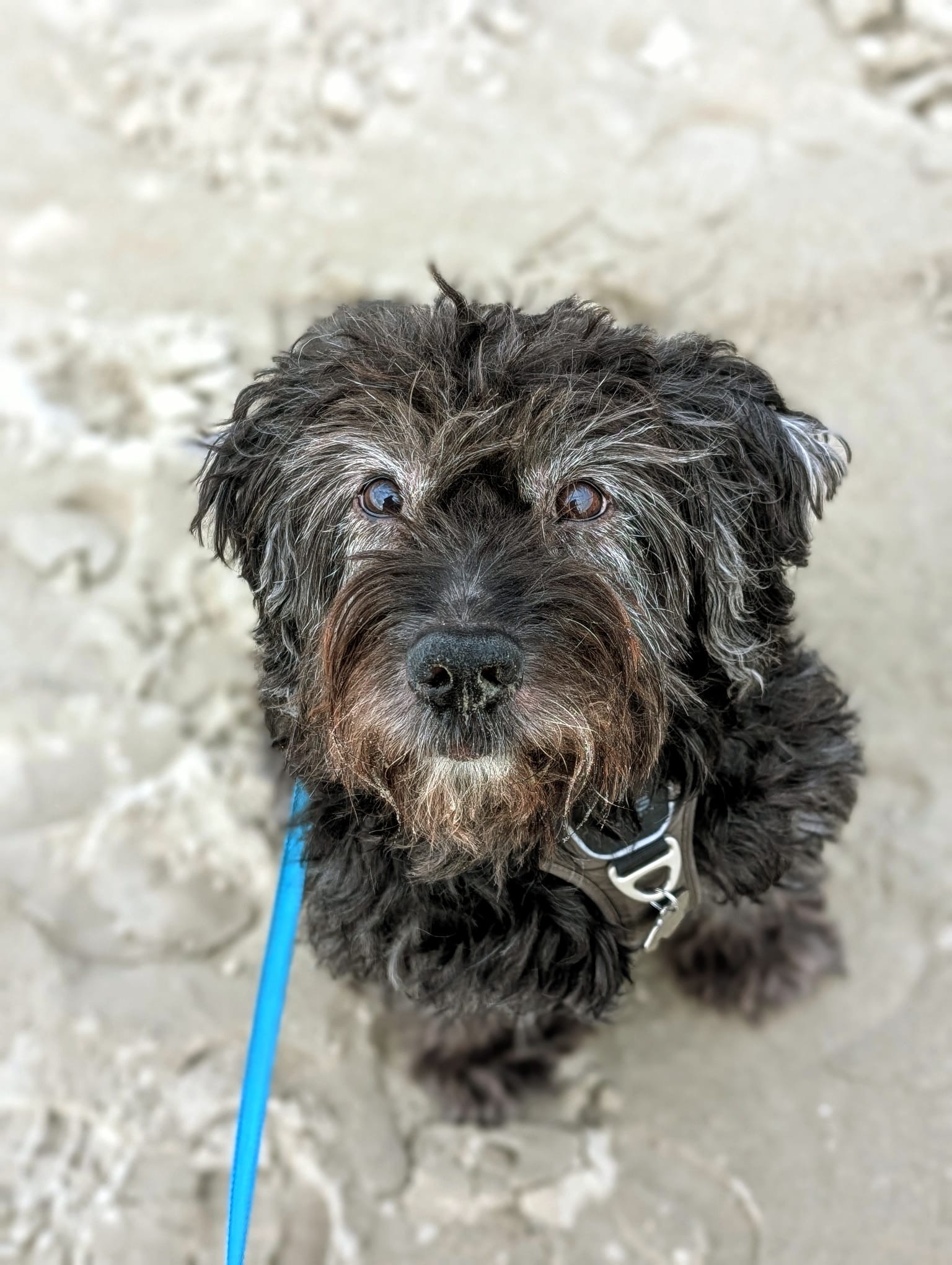New RVC study reveals breed predispositions and risk factors for rare adrenal tumour in dogs
Novel research from the Royal Veterinary College (RVC), in collaboration with the Faculty of Veterinary Medicine at Utrecht University, has revealed the epidemiology of phaeochromocytoma, a rare adrenal tumour, in dogs. The new study uncovers previously unreported breed predispositions and other demographic risk factors, which will contribute to improved recognition of canine phaeochromocytoma in general veterinary practice and deepen the understanding of the cancer.

Pheochromocytoma is a tumour that occurs in both dogs and humans, and develops in the adrenal medulla, the innermost part of one or both adrenal glands. It is characterised by the overproduction of hormones, such as ephinephrine and norephinephrine, which triggers the “fight or flight” response and can be life-threatening due to the cardiac complications it causes. Canine and human phaeochromocytoma share many clinical and biological features, and investigation of phaeochromocytoma from pet dogs is also important because it can be used as a research model for human phaeochromocytoma.
Phaeochromocytoma is often under-recognised in dogs in primary veterinary care because the typical clinical signs such as hypertension, collapse, increased heart rate and irregular heart rate, can be intermittent, non-specific and easily mistaken for other hormonal, neurological and/or cardiovascular conditions. Adding to the challenge, diagnostic biochemical tests for pheochromocytoma have only become available in veterinary practice over the past 15 years, with widespread commercial access arriving even more recently. The frequency of canine phaeochromocytoma had not been reported until now.
In this new study, the research team analysed the RVC VetCompass Programme’s electronic health records to report the annual prevalence and frequency as well as demographic risk factors for phaeochromocytoma diagnosis in dogs under primary veterinary care in the UK in 2019. The findings showed an annual incidence risk of phaeochromocytoma diagnosis of 1 per 100,000 dogs, which is 25 times higher than that reported for human phaeochromocytoma.
The study also identified several dog breeds with a predisposition to phaeochromocytoma diagnosis. In particular, the Soft-Coated Wheaten Terrier, German Pointer, and Miniature Schnauzer were respectively found to be 30.9, 11.0 and 4.7 times more likely to be diagnosed with phaeochromocytoma compared to crossbreeds. Terrier breeds in general and breeds predisposed to other endocrine tumours were also found to have increased odds of being diagnosed with phaeochromocytoma. This new information can help veterinarians to be especially aware of phaeochromocytoma risk in these breeds presenting with associated clinical signs.
Other risk factors included being a neutered male and aged between 9 and 15 years, which increased the risk of a phaeochromocytoma diagnosis 2.2 to 2.4 times, compared to being an entire male or a dog aged between 6 and 9 years.

Knowledge of predisposed breeds and risk factors will aid general veterinary practitioners in recognising, diagnosing and managing canine phaeochromocytoma and contribute to further understanding of phaeochromocytoma genetics and tumourigenesis in both humans and dogs.
Dr Floryne Buishand, Senior Lecturer in Small Animal Soft Tissue Surgery at the RVC and final author of the paper, said:
“The findings of our study are important for both veterinary and human surgeons and scientists. For the first time, we demonstrated that the overall incidence of phaeochromocytoma in dogs is up to 25 times higher compared to the incidence of phaeochromocytoma in humans. This underpins the value of spontaneous canine phaeochromocytoma as a translational study model for human phaeochromocytoma because canine phaeochromocytoma samples are more readily available for molecular studies, unlike human phaeochromocytoma samples.”
Dr Dan O’Neill, Professor in Companion Animal Epidemiology at the RVC and co-author of the paper, said:
“Although a rare diagnosis in dogs at a population level, phaeochromocytoma carries huge welfare impacts for those individual dogs diagnosed and their owners. Owners of predisposed breeds such as Soft-Coated Wheaten Terrier, German Pointer and Miniature Schnauzer and veterinary surgeons now have the power of big data as an advance warning system on the increased risk here and so hopefully achieve earlier diagnosis and better outcomes.”
Dr Martin Litviakov, previous rotating intern at the RVC, current surgical intern at Willows Veterinary Centre and first author of the paper, said:
“This study is a great example of using a ‘big data’ approach to uncover previously unknown predispositions and risk factors in a likely underdiagnosed neoplastic disease in dogs. The findings serve two purposes: firstly, they provide veterinary practitioners, particularly those in first opinion practice, with additional information to help increase their suspicion of phaeochromocytoma earlier in the disease process, hopefully leading to better outcomes; and secondly, they act as a scaffold for future studies in canine phaeochromocytoma especially when considering its potential as a translational model for the human disease.”
This research was supported at the RVC by an RVC Launchpad Award for Floryne Buishand and an award from the Kennel Club Charitable Trust and Agria Pet Insurance.
Notes to Editors
Reference
Litviakov M, O’Neill DG, Brodbelt DC, Galac S, Buishand FO (2025) Incidence and risk factors for phaeochromocytoma diagnosis in dogs under primary veterinary care in the UK. PLoS One 20(10): e0332811.
The full paper is available from PLOS One and can be accessed at: https://journals.plos.org/plosone/article?id=10.1371/journal.pone.0332811
For media enquiries, please contact:
- rvc@plmr.co.uk
- Press Line: 0800 368 9520
About the RVC
- The Royal Veterinary College (RVC) is the UK's largest and longest established independent veterinary school and is a Member Institution of the University of London.
- It is one of the few veterinary schools in the world that hold accreditations from the RCVS in the UK (with associated recognition from the AVBC for Australasia, the VCI for Ireland and the SAVC for South Africa), the EAEVE in the EU, and AVMA (probationary) in the USA and Canada.
- The RVC is ranked as the top veterinary school in the world in the QS World University Rankings by subject, 2025.
- The RVC offers undergraduate and postgraduate programmes in veterinary medicine, veterinary nursing and biological sciences.
- The RVC is a research-led institution, with 88% of its research rated as internationally excellent or world class in the Research Excellence Framework 2021.
- The RVC provides animal owners and the veterinary profession with access to expert veterinary care and advice through its teaching hospitals and first opinion practices in London and Hertfordshire.
You may also be interested in:
-
RVC Students Among Top Three in BSAVA Research Project Competition
Two RVC students were placed in the top three in the BSAVA’s Companion Student Research Project …

